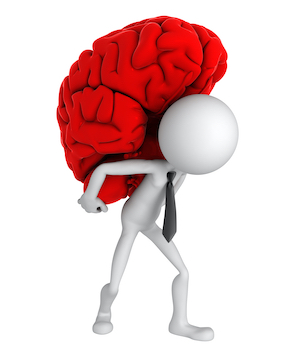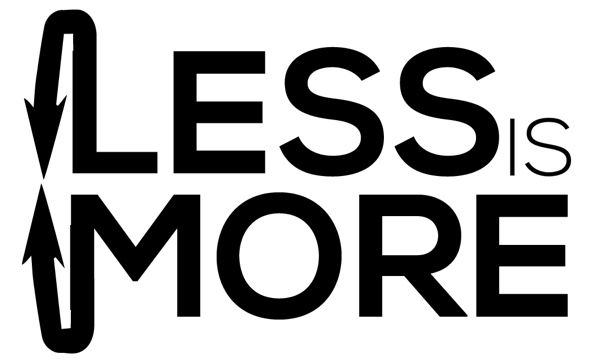In a recent study, age-related loss of strength was attributed to the inability of the nervous system to activate the muscle, and not found to be related to a loss of muscle mass.
The primary cause of loss in strength as we age was, until recently, believed to be loss of muscle mass. Because of this erroneous belief, various medicines were developed to enhance muscle function and physical capacity. None of them were successful, and here is the reason:
It's not about muscle.
In the 2019 paper titled Voluntary vs Electrically Stimulated Activation in Age-Related Muscle Weakness by Clark et. al. the role of the nervous system was studied in clinically meaningful age-related weakness in a cross-sectional group of 66 older adults (age range 67 to 85 years).
Participants in the study were categorized as either weak (the oldest group with an average age of 78.4 years), modestly weak (average age 74.9 years), or strong (the youngest of the bunch with an average age of 72 years). The researchers specifically sought to determine if weak older adults exhibit reduced ability to activate their lower extremity muscles compared to their stronger counterparts.
The degree of voluntary inactivation was calculated for each group by comparing maximum voluntary and electrically stimulated muscle forces.
The weak older adults exhibited significantly higher levels of voluntary inactivation compared to the strong older adults (14.2% vs 7.1%). What makes these findings even more interesting is the fact that lean thigh mass for all three groups was nearly identical.
Put another way: The participants in the study all had nearly identical muscle mass, but dramatically different ability to activate that muscle mass.

These results strongly indicate that age-related muscle weakness is due to the central nervous system of the body being unable to activate the skeletal muscle, rather than being a disorder of skeletal muscle or a loss of muscle mass.
"It's confirmatory evidence that the nervous system is a key culprit in weakness."
- Dr. Clark
In another study, the 2009 paper Longitudinal Study of Muscle Strength, Quality, and Adipose Tissue Infiltration by Delmonico et al, 1678 participants were followed for 5 years. They found that loss of muscle torque was 2-5 times greater than the loss of muscle cross-sectional area.
In short, loss of strength was weakly associated with loss of muscle mass. Something else accounted for the large drop in muscle strength.
A recent New York Times article titled "How We Get Stronger" explored the findings of Drs. Glover and Baker published in the Journal of Neuroscience. Their paper titled Cortical, Corticospinal and Reticulospinal Contributions to Strength Training is the first report of a strength training intervention in non-human primates and gives us even more insight into what is really happening within our nerves when we lift weights.
"Strength isn't just about muscle mass, you get stronger because the neural input to your muscles increases."
- Dr. Glover
The authors did not see any evidence that changes in motorneurons outside the spinal cord, i.e., the nerves that activate muscle (motor units), played any role in the ability to lift more weight. It's the central nervous system. We've put our focus on muscle, while the changes that actually matter are within the brain and spinal cord.
And what affects that tract of nerves from the brain to the muscles is: Load
Even though the monkeys only lifted with their right arms, their spinal circuits adapted to demonstrate a greater output even on their left side. Significant changes occurred in both the gray and white matter of the spinal cord on both the right and left side, with the trained side showing a greater effect.
The highest load lifted led to the greatest activation of all muscles in the right arm. But the same thing happened in the left arm that did not train. The lighter loads lifted didn't have any effect on the immobilized left arm.
With increasing loads, the brain (both higher and lower functioning areas) improved connectivity and efficiency of those connections to send information more quickly and strongly down the spinal cord, where spinal circuits got information out to the limbs more quickly and strongly, so more force could be generated by the muscles.
You will trigger the greatest improvement in the connectivity, strength, and efficiency of your nervous system when sustaining a maximum contraction of the target muscle group when positioned at the optimal joint angle for greatest force output.

Measured Isometric Leg Press with 120º Joint Angle in the Knee
Measured Isometric Exercises are the most effective and efficient way of producing changes in the nervous system that really matter for improving physical capacity. Safely applying the highest possible load in the strongest and safest position with no moving parts to cause injuries is critical.
Here's why:
Performing a maximum voluntary isometric contraction in the most efficient joint angle recruits the most muscle mass and generates the most force which leads to the greatest gains in neurological efficiency and therefore strength.
Isometric contractions also yield far greater improvements in voluntary activation compared to concentric or eccentric contractions.
Brian Murray, Exercise Physiologist and Director of Clinical Research at STRONG WOMEN ROCK has been leading the way in this research for nearly 20 years.
"I have had clients give it everything they've got for 5 seconds at 1-4 stations. I have worked with people of all ages for many years in a row, many of them in their 80's. I have yet to see someone max out their strength or lose their ability to voluntarily activate their muscles over time. My experience has shown me that no one is too old or too inactive to reawaken dormant nervous system pathways and achieve life-changing-long-lasting improvements in physical capacity."
- Brian Murray- Exercise Physiologist
Age-related decline in muscle strength can be corrected with properly performed measured isometric strength training exercises.
